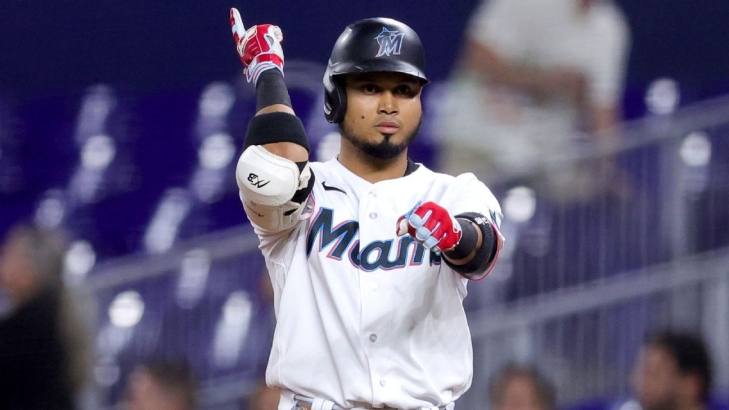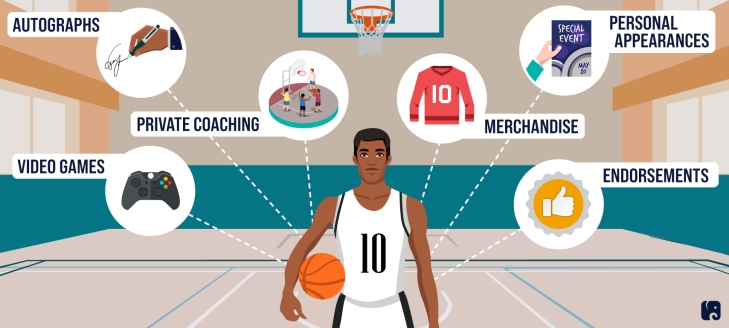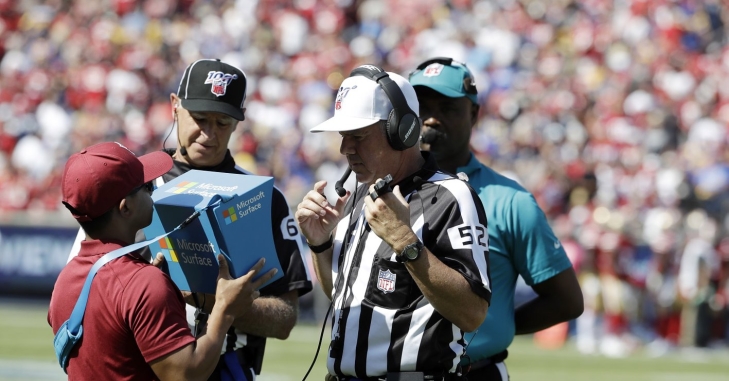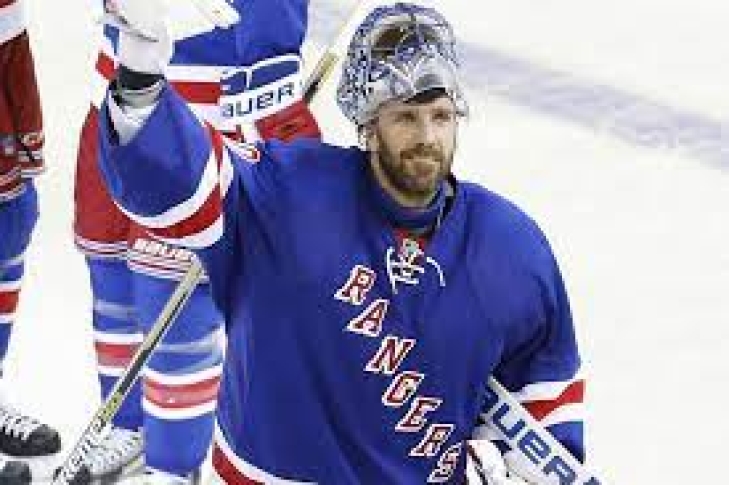
Committee Chairman
June 26 Update: Notinhalloffame MLB Cup Standings.
It is with great pleasure that we continue the third annual Notinhalloffame MLB Regular Season Cup, and let us explain how this works:
With every single regular season game, we anointed the best five players in the game with descending points, 5-4-3-2-1.
We knew the following:
- The top players for the MLB NIHOF Cup are not always the best in the league, as injuries keep players out of games, and a premium on staying healthy can help pile up points. It also does not hurt to be a top player on an average or mediocre team, as they can amass Cup points easier that elite players on loaded squads.
- In Baseball, it is more common than in Basketball and Hockey for a player to accrue points with a single Home Run in a game, and overall favors position players. Starting Pitchers have a hard time with approximately 30-35 Starts and throwing less innings than in previous generations. This also is true for closers, which is not made for this process.
- Please remember, that this is NOT necessarily who we think were the best players this year, and does not reflect overall consistency. Treat this the way did, as a fun process and more of a compilation of temporary statistical domination.
At present 865 (up from 847 last week) Players have generated at least one Cup Point.
So, MLB players! Get your agents to work winning this into your contracts!
This is the eighth update, with standings as of the morning of June 26.
1. Shohei Ohtani: Los Angeles Angels, Designated Hitter & Pitcher: (Ranked #1 last week)
126 Cup Points, 77 Games, 1.64 Cup Points per Game, 25 Home Runs, 61 Runs Batted In, 10 SB, .297/.377/.623, 5.4 bWAR & 6-3, 3.13 ERA, 117 SO, 1.045 WHIP.
The Notinhalloffame Cup is built for Ohtani, who can compile points in two different avenues; the only one who can do so. Ohtani has been brilliant this week, and the chasm between the top spot and second spot has never been higher. He is off to a good pitching start, leading the AL in H/9 (5.7), SO/9 (11.8) and is third in Strikeouts (117). With his bat, Ohtani is the current American League leader in Home Runs (25), Runs Batted In (61), Slugging (.623), OPS (1.001) and OPS+ (170) and Total Bases (187). The AL MVP is his to lose.
2. Ronald Acuna: Atlanta Braves, Outfield: (Ranked #2 Last Week)
94 Cup Points, 77 Games, 1.22 Cup Points per Game, 16 Home Runs, 47 Runs Batted In, 35 SB, .328/.402/.561, 4.2 bWAR.
Acuna leads all National League batters in Stolen Bases (30), Runs Scored (67), Slugging (.561), OPS (.962) Total Bases (176) and bWAR (4.2). He is also second in Batting (.328), and fifth in OBP (.402).
3. Juan Soto: San Diego Padres, Outfield: (Ranked #5, Last Week)
89 Cup Points, 79 Games, 1.13 Cup Points per Game, 14 Home Runs, 41 Runs Batted In, 6 SB, .273/.425/.502, 3.4 bWAR.
Soto is still the National League leader in Walks (71) and is second in OBP (.425). He is also fourth in OPS (.927).
4. Luis Arraez: Miami Marlins, Second Base: (#8, Last Week)
85 Cup Points, 73 Games, 1.16 Cup Points per Game, 3 Home Runs, 33 Runs Batted In, 1 SB, .388/.451/.493, 3.5 bWAR.
Arraez is flirting with a .400 Batting Average and he is currently the National League leader in Hits (111), Batting Average (.399) and On Base Percentage (.451). He also has a very impressive Slugging Percentage (.493) for a player with only three Home Runs.
5. Jorge Soler: Miami Marlins, Outfield & Designated Hitter: (#3, Last Week)
84 Cup Points, 75 Games, 1.12 Cup Points per Game, 21 Home Runs, 45 Runs Batted In, 1 SB, .247/.345/.524, 1.2 bWAR.
Soler is playing more and more at DH this year, but he is providing the Marlins incredible offense. He is third in NL Home Runs (21), and ninth in Slugging (.524).
6. Rafael Devers: Boston Red Sox, Third Base: (Ranked #6 Last Week)
83 Cup Points, 75 Games, 1.07 Cup Points per Game, 18 Home Runs, 60 Runs Batted In, 0 SB, .241/.312/.486, 1.3 bWAR.
Devers holds strong on at #6 and is currently second in the AL in RBIs (60) and fourth in Home Runs (18).
7. Corbin Carroll: Arizona Diamondbacks, Outfield: (Ranked #4, Last Week)
81 Cup Points, 62 Games, 1.16 Cup Points per Game, 16 Home Runs, 41 Runs Batted In, 23 SB, .290/.369/.558, 3.7 bWAR.
Carroll is running away with the National League Rookie of the Year Award, and it is only June! At present, the young Outfielder is third in the National League in bWAR (3.7), and is in the top ten in Batting Average (.290), OBP (.369), Slugging (.558), Runs (59), Home Runs (18) and Stolen Bases (23).
8. Matt Olson: Atlanta Braves, First Base: (Ranked #10 Last Week)
78 Cup Points, 75 Games, 0.96 Cup Points per Game, 25 Home Runs, 58 Runs Batted In, 1 SB, .238/.350/.541, 1.8 bWAR.
Olson took over the National League lead in both Home Runs (25), RBIs (60) and is sixth in Slugging (.541)
9. Marcus Semien: Texas Rangers, Shortstop: (Ranked #9, Last Week)
75 Cup Points, 77 Games, 0.97 Cup Points per Game, 10 Home Runs, 54 Runs Batted In, 7 SB, .278/.339/.459, 3.3 bWAR.
Semien is having an outstanding 2023, though he has substantially cooled off in the last three weeks. He is the current AL leader in Runs Scored (62) and is fourth in bWAR for Position Players (3.3).
10 (TIE). Alex Bregman: Houston Astros, Third Base: (Not in the Top Ten Last Week)
74 Cup Points, 77 Games, 0.96 Cup Points per Game, 11 Home Runs, 49 Runs Batted In, 3 SB, .248/.342/.408, 1.9 bWAR.
Bregman gives Houston a top-ten entrant, and is currently tenth (49) in American League RBIs.
10 (TIE). Mookie Betts: Los Angeles Dodgers, Outfield: (Not in the Top Ten Last Week)
74 Cup Points, 77 Games, 0.96 Cup Points per Game, 19 Home Runs, 47 Runs Batted In, 6 SB, .258/.354/.512, 2.6 bWAR.
Betts returns to the top ten, and is ninth in RBIs (47).
New York’s (AL) Aaron Judge fell out of the top ten.
Our next update will be the afternoon of July 3.
Christopher Linton Explains Why The Name, Image, And Likeness Policy Is Important For Athletes
In the world of sports, athletes possess remarkable talent, skills, and dedication that captivate millions of fans around the globe. However, for decades, these talented individuals at the collegiate level have been restricted from leveraging their name, image, and likeness (NIL) for personal gain. Thankfully, the recent implementation of the Name, Image, and Likeness policy has brought about a transformative change, empowering athletes to capitalize on their hard-earned fame. Today, Christopher Linton explores the significance of the NIL policy and its positive impact on athletes.
Empowering Athletes
The NIL policy represents a significant milestone in the sports industry, giving college athletes control over their brand and image. Before this policy, college athletes were often subjected to strict rules and regulations imposed by an archaic NCAA, preventing them from monetizing their personal brand. With the NIL policy, athletes can pursue endorsement deals, brand collaborations, and various entrepreneurial ventures that align with their interests and values.
Financial Stability And Compensation
One of the most notable advantages of the NIL policy is its potential to provide athletes with much-needed financial stability and compensation.
Many collegiate athletes dedicate countless hours to training and competing, often sacrificing their academic pursuits and personal lives. However, they were not allowed to benefit financially from their athletic achievements.
The NIL policy allows athletes to enter into sponsorship agreements, sell merchandise, or monetize their social media presence, offering them a chance to earn income while pursuing their athletic dreams.
Educational Opportunities
The NIL policy also opens doors for athletes to explore educational opportunities that were previously out of reach.
Student-athletes often face the dilemma of balancing their athletic commitments with their studies. With the ability to earn money through NIL agreements, athletes may have the financial means to pursue higher education or invest in personal development programs, expanding their horizons beyond the realm of sports.
Fostering Entrepreneurship And Business Acumen
By allowing athletes to engage in entrepreneurial activities, the NIL policy encourages them to develop valuable business skills and unlock their entrepreneurial potential.
Athletes possess unique insights into the world of sports, and their personal brand has the potential to attract loyal consumers. Through endorsements, collaborations, and establishing their own businesses, athletes can gain valuable experience in marketing, negotiation, and strategic decision-making, setting them up for success both during and after their athletic careers.
Promoting Equality And Fairness
Implementing the NIL policy also plays a crucial role in promoting equality and fairness within the sports industry.
Previously, professional athletes primarily enjoyed the benefits of athlete endorsements, leaving college athletes with limited opportunities. The NIL policy ensures that athletes at all levels have the same rights to profit from their NIL, creating a more level playing field and reducing the disparities between collegiate and professional athletes.
Enhancing Fan Engagement And Connection
The NIL policy fosters a deeper connection between athletes and their fans by allowing athletes to personally engage with their followers.
Athletes can leverage their social media platforms to share their stories, insights, and experiences, creating a sense of authenticity and relatability. This increased interaction can lead to stronger fan and brand loyalty and heightened engagement, benefiting athletes and fans.
Personal Brand Development
The NIL policy enables athletes to shape and develop their brand actively. Athletes are no longer restricted to being solely seen as athletes on the field but can now showcase their unique personalities, values, and interests off the field.
They can collaborate with brands and companies that align with their brand, allowing them to authentically express themselves and connect with their audience. This enhances their marketability and gives them a platform to inspire and positively influence others.
By embracing the power of their brand, athletes can become role models, advocates, and ambassadors for causes they deeply care about. They can use their platform to raise awareness for important social issues, support charitable initiatives, and inspire positive social change.
Long-Term Career Development
The NIL policy plays a crucial role in the long-term career development of athletes. While sports careers can be rewarding, they are often short-lived due to factors such as age, injuries, or retirement. By allowing athletes to capitalize on their name, image, and likeness, the policy enables them to establish a solid foundation for their post-athletic careers.
Athletes can use the financial resources gained through NIL agreements to invest in education, professional development, and entrepreneurial endeavors supporting their transition into other industries. This proactive approach to career planning ensures that athletes have options and opportunities beyond their time in sports, reducing the likelihood of sudden career changes and the challenges associated with the post-athletic transition.
Conclusion
Christopher Linton says the Name, Image, and Likeness policy does not only benefit athletes during their athletic careers but also sets them up for long-term success in various aspects of life. The policy supports their overall career development by empowering athletes to leverage their brand, pursue financial stability, and explore educational and entrepreneurial opportunities. It ensures that athletes can thrive during and after their time in sports, creating a positive and sustainable future for athletes across all levels and disciplines.
The Impact of Technology in American Football: From Instant Replay to Virtual Reality Training
American football is considered one of the sports that gradually evolved from the regular games of football and rugby, except that in this game, players are allowed to touch the ball and carry it with their hands. American football is one of the largest sports that has become widespread. It is popular in the United States of America, and the presence of professional leagues such as the NFL evidences this. This league attracts the best players worldwide, and the popularity of NFL tickets is not limited to the USA. This game is famous in Canada, the UK, Germany, and other countries around the world.
The latest technology in American football
Playing American football is like wrestling, but with shoulder pads instead of shields to fend off rivals. This sport requires equal intelligence and strength, as you have to outwit your opponent while being careful not to be attacked. Practice is critical to success in this area. It's not just where you learn to work with your teammates. It's also where you perfect your movements.
Next, we will discuss advanced technologies that have improved American football.
1. Smart ball
Smart ball has a variety of sensors, allowing any player to understand the mechanics of their shots and make adjustments to improve their accuracy. The sensors in the ball have an accelerometer, a gyroscope, and Bluetooth. Together, these sensors can measure the speed and rotation of the ball, as well as the direction and rotation of the ball, and allow the ball to communicate with a smartphone or tablet for data analysis.
By connecting to a smartphone or tablet, anyone on the line (your coach, friend, or parent) can get real-time feedback on your shots and gameplay. Moreover, while sensors let you focus on areas that need attention, the app lets you track your improvements over time.
2. A virtual reality
One technology that is gaining popularity in soccer practice is virtual reality (VR). VR allows you to experience a realistic simulation of game scenarios and play them in a safe and harmonious environment. It can be a good option to improve your skills and prepare for different real-world gaming situations. For a comprehensive approach to training, incorporating a playbook can further enhance your understanding and strategy.
When you wear a VR headset, you enter a virtual playground and can practice challenges, make decisions, and learn other skills just like in a real playground, but without the risk of being removed. This can be especially helpful for players who are recovering from injuries and cannot participate in traditional training.
Another important aspect of virtual reality is that it helps visualize and mentally prepare for the various challenges expected in matches. In VR, you can imagine yourself in match-like scenarios, which will help you be more confident and prepared when you enter the field. In general, VR technology is becoming more accessible and developed, so we expect a boom in the next few years to use it in all dynamically developing areas of life, including football.
3. Player tracking systems
There are many gadgets for sports enthusiasts, and trackers are becoming more popular with athletes looking to gain a competitive edge. They can be cutting-edge tools for every player looking to take their playing experience to the next level.
The Catapult is one of the most popular wearable performance trackers that most players use today. It looks like a vest that tracks data like this:
- Speed and distance;
- Measures your fatigue;
- Measures the actual load of your multidirectional movements on the field.
The system can help you identify what you need to improve and make recommendations on how to make those improvements. It can also advise when to keep pushing and when to back off to reduce the risk of a preventable injury. This information is used to help coaches and performance professionals improve their players' training and recovery to prevent injury and improve overall performance.
4. Interaction systems
You can use one of the many workout apps to get a better body and improve your physical performance. However, a footballer knows that the ability to react quickly to an opponent's actions can mean the difference between winning and losing a match. That's why it's so essential to improve your reaction time.
BlazePod is an example of a reaction system that uses light to challenge and enhance:
- Reaction time;
- Response accuracy;
- The constancy of the reaction.
The portable device allows players to train their reaction speed in a fun way. The BlazePod system consists of several small, portable lights that can be placed in different field areas. The lights can be programmed to flash at other times, and you have to respond quickly and accurately to the flashing lights. By training with the reaction system, you will learn how to quickly and accurately react to the actions of your opponents, which will give you a competitive advantage on the field.
5. HIT Virginia Tech System
Developers at Virginia Tech University have developed a system to control how hard a football player gets hit in the head. The system consists of several sensors (acceleration sensors), a microprocessor, and a radio frequency transceiver unit that reports data from the playing field to the coach's computer. There are eight helmets in the system, and 38 different players alternately wear them.
This system explores the relationship between what kind of acceleration precedes a concussion. The university has been using the system since the start of the football season. Each helmet has six acceleration sensors that trigger when a threshold load of 10 G is exceeded in one of six directions (forward-backward, left-right, up-down). Overloaded data is sent to the computer. The helmet also has 128 KB of flash memory.
American football is not the only example of the fact that the latest technologies help develop and improve this sport and its players.
The Hockey Hall of Fame names the 2023 Class
It is a huge day for us at Notinhalloffame.com with the announcement of the newest members of the Hockey Hall of Fame, featuring seven new inductees,
The unquestionable headliner is former Goalie, Henriq Lundqvist. The Swedish netminder played his entire NHL career with the New York Rangers, where he won 459 Games, which is currently fifth all-time. The 2012 Vezina Trophy winner backstopped the Rangers to a Stanley Cup Final in 2014. Nicknamed “The King”, Lundqvist had copious success on the International level, winning a Gold Medal at the 2006 Games, and Silver in 2014.
Caroline Oullette is in select company as one of the few people to win Gold in four consecutive Olympic Games (2002, 2006, 2010 & 2014), and she earned Gold Medals in six World Hockey Championships (1999, 2000, 2001, 2004, 2007 & 2010). This has been a special year for Oullette, who last month was inducted into the International Ice Hockey Federation Hall of Fame.
Tom Barrasso, who was known mostly for his time with the Buffalo Sabres and Pittsburgh Penguins, won the 1984 Calder and 1985 Vezina Trophy. He had a lifetime record of 369-277-86 over 19 seasons.
The third Goalie to enter is Mike Vernon, who won two Stanley Cups, one with Calgary (1989) and Detroit (1997). Vernon won the Conn Smythe in the latter Cup win and had a career mark of 385-274-92.
Prior to his selection, Pierre Turgeon held the distinction of having the highest Points (1,327) of any player not in the Hockey Hall of Fame. The 19-year veteran is also a former Lady Byng winner.
Ken Hitchcock enters the Hall of Fame as a Coach. Currently fourth in Wins (849), Hitchcock led the Dallas Stars to a Stanley Cup Championship in 1999.
The final entrant is Pierre Lacroix, who joins the Hall as a builder. The former player agent became the General Manager of the Quebec Nordiques in 1984 and was with them when they relocated to Colorado. He oversaw the Avalanche’s Stanley Cup wins in 1996 and 2001.
We will now begin work on revising our Notinhalloffame.com list of those to consider for the Hockey Hall of Fame. Look for that next month.
We here at Notinhalloffame.com would like to congratulate the newest members of the Hockey Hall of Fame.





